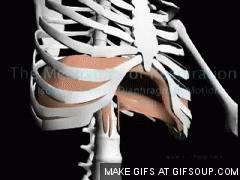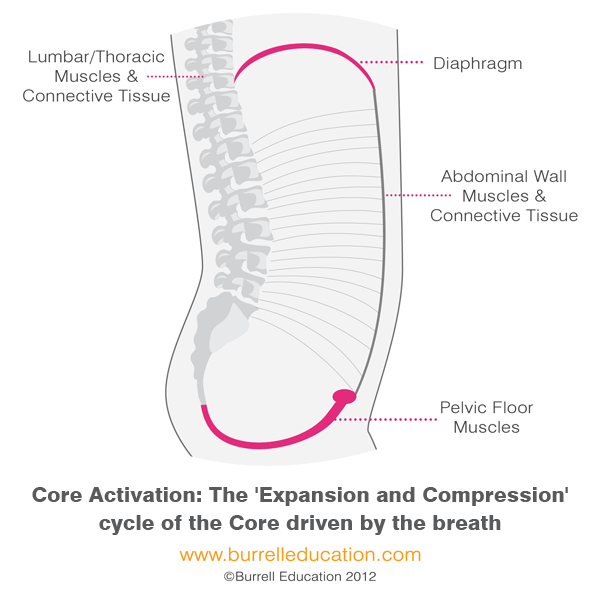Whenever we talk about lifting it's usually a question of form, the best exercises to perform, or the best workout program. Most of us skip an essential fundamental which can completely alter our workouts - breathing. If you're reading this, then I'm gonna go out on a limb and assume that you're breathing. Congrats! But how are you breathing during your lifts? Do you look like this guy?
Well, then you're probably holding your breath. This is actually pretty risky, both for your heart AND your pelvic floor. Let's start with the breathing basics first.
Breathing 101
The diaphragm is the muscle you use to breathe. It’s attached to your ribs and looks like an inverted bowl. As you breathe in, the diaphragm contracts, pulls down and creates space in your lungs which sucks air in. When you breathe out the diaphragm relaxes, returns to the upside bowl shape and pushes air out of your lungs.
Time for a quick activity!
Let's check to see if you're using this powerhouse muscle. Put one hand on your chest, one hand on your stomach. Which hand moves as you breathe in? If the hand over your stomach is primarily moving then congrats! You're using your diaphragm. Not so? Focus on expanding your belly like a balloon as your breath in, then gently pulling in and tightening your tummy as your breath out. That's "diphragmatic breathing."
Your posture also affects breathing. Try slouching as far forward as you can and take a deep breath. Now imagine your head is being pulled up to the ceiling by a string and try again. Much easier when you're up straight right?
The Diaphragm is part of a team
The diaphragm doesn't work alone. The abdominals, back, and pelvic floor muscles work in sync with your diaphragm. These muscles help to support your low back and prevent injury. In order to get this support your pelvic floor needs to lift, your abdominals tighten, and your back muscles activate as you breathe in, and reverse the process as you breathe out.
Image from: https://www.burrelleducation.com/2014/post-natal-core-restore-the-myofascial-lines/
We naturally tend to hold our breath when we do difficult activities. The problem occurs when you strain, or perform what we call the “valsalva maneuver.” This is pretty crazy- essentially you are trying to breath out against a closed off exit (i.e. trachea).
The Valsalva maneuver is useful for a very small and specific population: competitive powerlifters. I mean like, world class qualifying powerlifts, not like at-the-gym-with-friends-turning-purple “powerlifting.” The National Strength & Conditioning Association recommends performing this technique only under the guidance of an experienced and qualified coach. Even under those conditions, you shouldn't hold it for more than a couple seconds.
The reason your average Jody shouldn't be doing it is because it can result in 2 things: a strain on your heart and on your pelvic floor muscles.
When you perform a valsalva maneuver your heart rate drops and your blood pressure rises which can lead to blackouts. This is obviously no beuno when you add heavy weights into the mix and can be especially dangerous for people who have high blood pressure. The strain on your pelvic floor could lead to weakening which may result in leaking (i.e. incontinence) and possibly contribute to pelvic organ prolapse (when your pelvic organs fall out of your body.) Ladies, this usually affects us more than men because of anatomy.
So how should you breathe when lifting?
1. Breathe in during the easy part of the exercise
This is typically the lowering part of an exercise. Bonus points if you can get a nice big belly breath in!
2. Breathe out during the hard part of the exercise
This is typically on the "push" part of an exercise, like when you are rising from a squat, pushing the weight up on bench press, or coming up during a deadlift. Try breathing out through pursed lips, like you are trying to blow out a candle. If you're really struggling then try counting your reps - it forces you to breathe.
3. Breathe during each rep
It may seem like a given, but don't try to crank out multiple reps while holding your breath!
The bottom line: Make sure you ARE breathing when you're lifting. Holding your breath and straining can be damaging not only to your heart but also to your pelvic floor. Ain't nobody got time for the valsalva!












